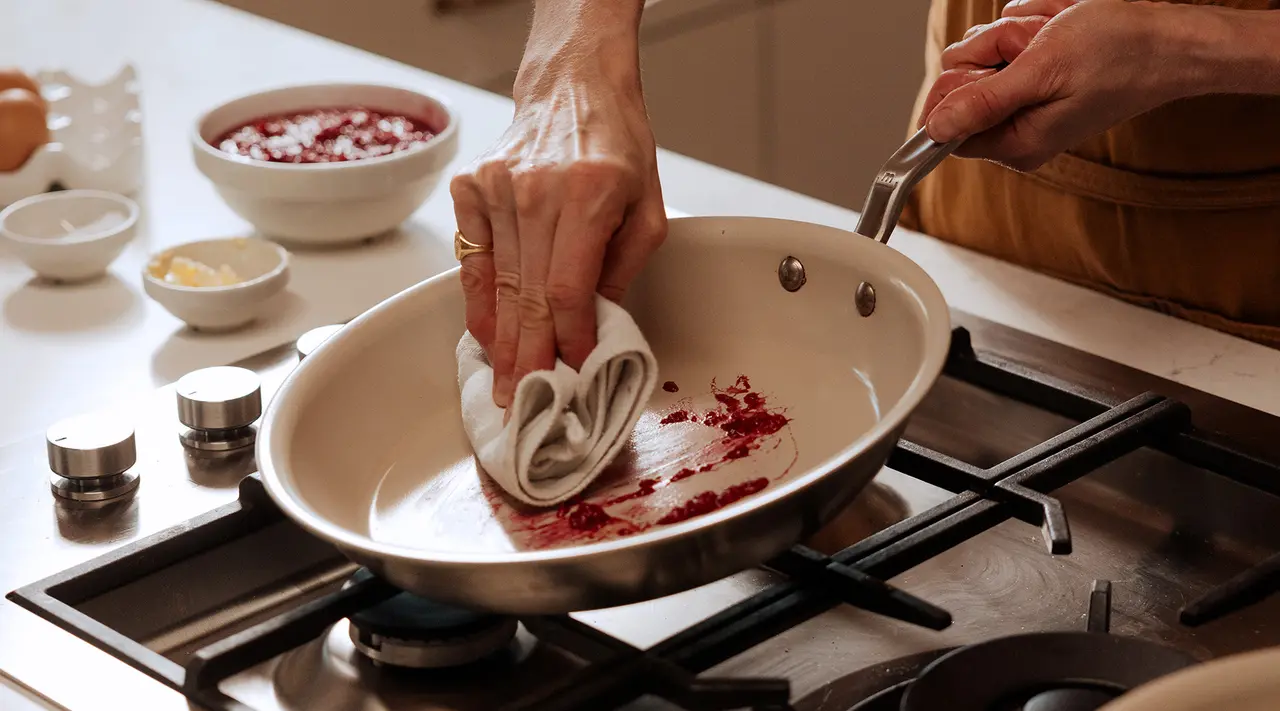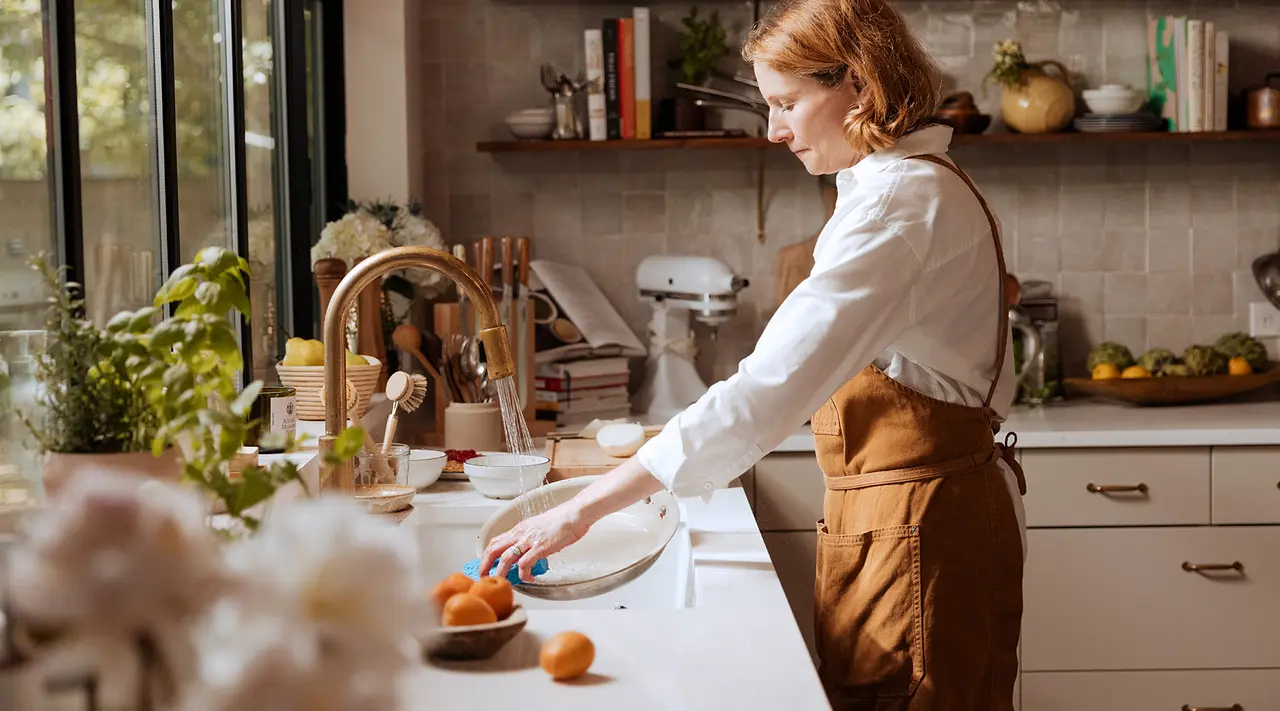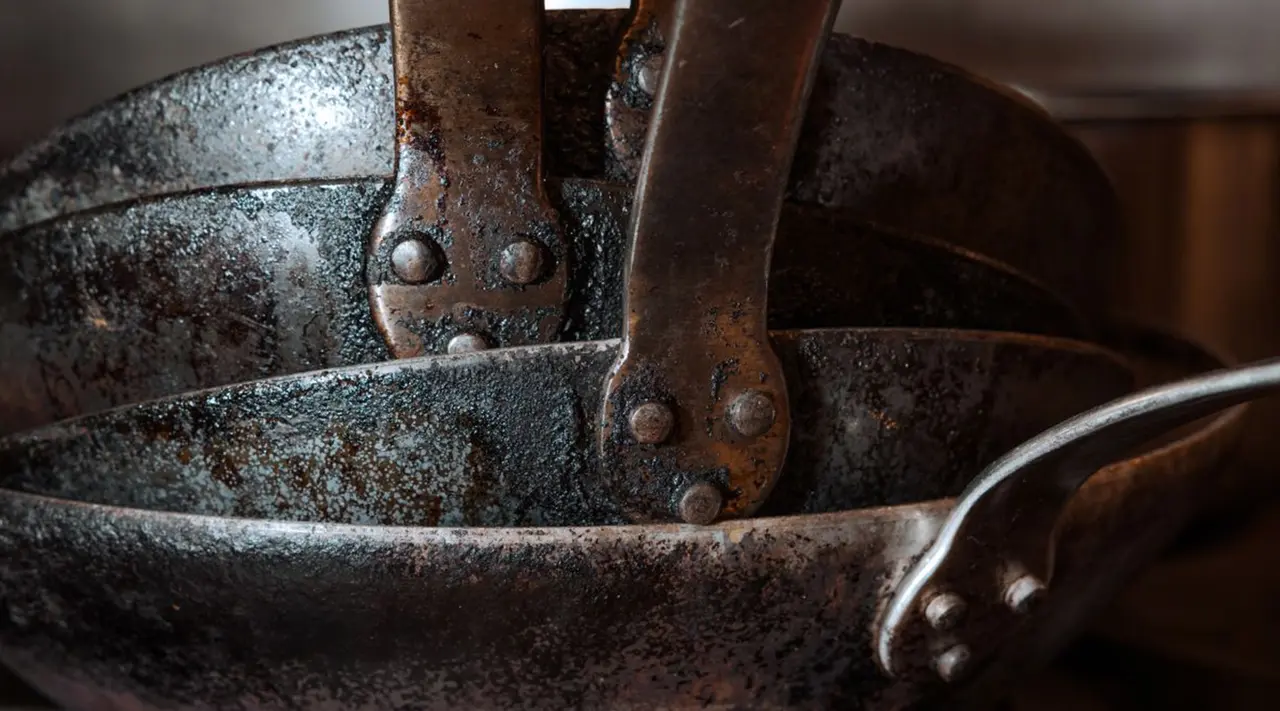There’s nothing like a brand-new ceramic pan: shiny, and pristinely non stick, it feels like it’s just waiting to make all of your mess-free breakfast taco-and-blueberry pancake dreams come true.
As convenient as it may be, however, ceramic isn’t invincible: like traditional non stick, you’ll need to know how to care for these pans properly if you want the coating to last a long time. So if you’re shopping for ceramic cookware—or just staring nervously at your new pan, still in its unopened box, for fear that you’ll ruin it—we’ve got just the guide to help.
Understanding Ceramic Cookware

Ceramic cookware is an extremely popular alternative to conventional non stick pans. With a naturally non stick surface made from a naturally derived substrate, ceramic pans offer the convenience of non stick, but without the synthetic coating. Not only that, but the ceramic market is no longer dominated by low-quality pans with short lifespans—many brands, Made In included, are introducing ceramic cookware made using premium-quality materials like stainless steel to their lineup.
The Dos of Maintaining Ceramic Cookware

Here’s how to do right by your pan.
Do Use the Right Utensils
Like conventional non stick cookware, ceramic requires a gentle touch. Tools made from non-abrasive materials like wood, nylon, or silicone can protect the delicate surface from scratches, chips, and other forms of damage, so always reach for those over tools made from metal.
Do Clean Gently
Always be hand-washing—at least, when it comes to your ceramic pots and pans. Cleaning ceramic is relatively simple: using a soft sponge and your favorite gentle dish soap or our specialized CeramiClad™ Cleaner, give your pan a thorough scrub immediately after it’s cool enough to handle, then rinse and dry thoroughly. No lengthy soaks, no leaving it piled up in the sink, and, of course, no dishwashers—period.
Do Store Properly
Every pan deserves a proper home—especially ceramic pans. We typically recommend a hanging rack, but if you don’t have one or don’t want to install one, we also endorse stacking your cookware by placing a protective trivet, dish towel, or Pan Protector in between each layer. You can even store it on your stovetop—just make sure there’s nothing else inside your pot or pan, and that it’s not in danger of bumping into other pieces of cookware.
Do Mind the Heat
Just like non stick, the coating of ceramic cookware doesn’t love being used on super high temperatures—or even moderately high ones. Keeping the flame on low or medium heat will preserve your pan’s ceramic non stick finish and make for an easier cooking experience.
Of course, cooking over a low or medium flame is a lot easier if you’re using a high quality pan. Each piece in our brand new CeramiClad collection features a 5-ply Stainless Clad interior for even heat distribution, which makes for better browning and more consistent cooking, even on medium heat.
The Don’ts of Maintaining Ceramic Cookware

Boundaries are healthy—especially when it comes to what not to do with your ceramic cookware.
Don't Use Metal Utensils
While sidelining your favorite fish spatula or stainless steel tongs can feel a little sad, it’s an absolute must when working with ceramic cookware. Metal utensils are typically quite abrasive, leaving permanent scratches that may not be visible to the naked eye, but which will gradually build up and destroy your pan’s non stick surface.
Don't Use Abrasive Cleaners
Ceramic isn’t indestructible the way carbon steel and cast iron are—i.e., there’s no way to restore that coating once it’s been severely damaged. Aside from only using non-abrasive tools and utensils, you should also avoid harsh cleaning agents like bleach, oven cleaner, and ammonia.
Don't Overheat Empty Cookware
The quickest recipe for a damaged ceramic pan is to place it over the flame without anything in it: without food, oil, or butter to absorb the heat, your pan will quickly overheat, causing the ceramic surface to break down and possibly even crack. Always add something—food, cooking fat, even water—to your pan before preheating it.
How to Extend the Lifespan of Your Ceramic Cookware

At a glance, here’s what you need to know to keep your ceramic looking (and cooking) its best.
- Only use medium or low heat when cooking—we’ve found our CeramiClad™ line fares best just below medium on conventional stovetops, and medium-low on higher-end stoves.
- Never heat while empty—always add food or cooking fat to an empty pan before turning on the stove.
- Only use non-abrasive cooking tools and utensils made from wood, silicone, plastic, rubber, or nylon, and avoid metal.
- Always wash by hand, using gentle soap or CeramiClad™ Cleaner and a soft dish sponge: never put in the dishwasher.
- Store by carefully stacking between layers of protective material, or by hanging on a rack.
Ready to Shop?
If this all sounds like a lot of rules, remember: like conventional non stick, ceramic is still an incredibly low-maintenance cookware option. As long as you stick to these (relatively simple) cleaning and care guidelines, your pan is bound to fare well for many meals to come
Another step you can take? Invest in the best ceramic-coated cookware you can find. Our CeramiClad™ Collection features a fully cladded stainless steel base and premium, nontoxic ceramic coating for optimal performance and durability—plus, it’s 100% American stamped, coated, and assembled.



























